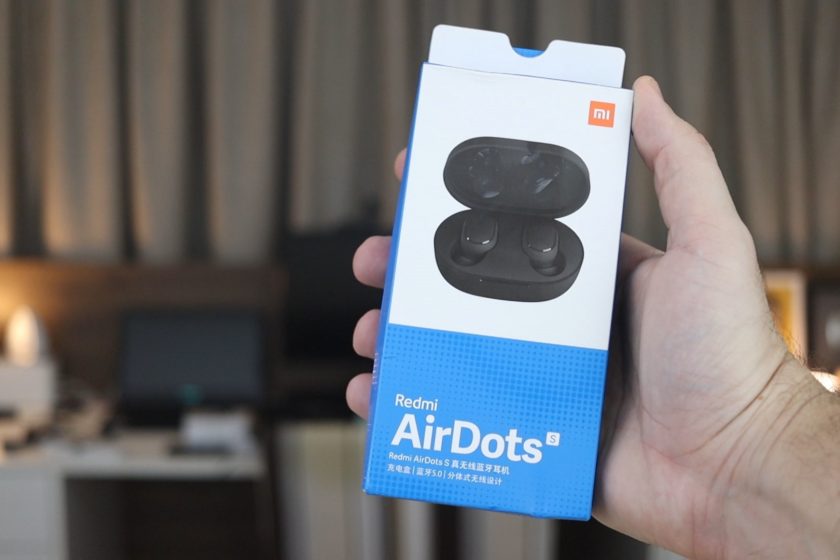Where to buy safely? AliExpress or Banggood.
I was really looking forward to produce this review, because it’s about the successors of the earphones I used most since last year, by far. In fact, I think Xiaomi’s Redmi AirDots S aren’t a proper “version 2”, but something in between.
In the image below, you can see the AirDots S on the left and the first AirDots on the right. There’s no noticeable difference at all, everything has the exact same design: the capsules, the charging case and, unfortunately, also the micro USB plug at the rear. I know there’s a focus on budget, but a USB-C port would make me happy.
So what’s new? Two things: first, there’s a low latency gaming mode, which slightly reduces audio quality for a faster response time. That is, the interval between the sound being generated in the game and played on the AirDots S should tend to zero. And I need to be honest: I tested that with Asphalt 9 and Free Fire on Android, and couldn’t tell much of a difference. Paying close attention, the sound of shooting in Free Fire was more accurate indeed, so I think this can be a bigger deal for hardcore gamers.
The second improvement is that the audio of the capsules is now binaural. That means that L and R capsules work independently, each one connects to the phone by themselves. In the first AirDots, the right capsule would connect and then mirror its signal to the other one. So this makes it easy for you to use only one at a time, without worrying about which one to pick. Also, in theory, this can eliminate issues in which only one side syncs and plays.
I’ve been testing the product for 1 month now, so I guess it’s enough to say that indeed I had no syncing problems. And although this has not been an issue for the predecessors, it’s a nice thing to have.
Regarding audio quality, it remains exactly the same. That means quite decent. The great merit of the AirDots for me is that even after I’ve tested so many TWS earphones over the past year, they remain at a respectable level in comparison to competition.
We get an audio profile that isn’t exaggerated in any sense. The bass is present, the mids and highs are decent, creating a nice sound range and a pleasant audio experience for the general public. Depending on user’s taste, they may lose to some other options in the same segment. But if that happens, it won’t be by a large margin.
Another thing that looked the same was the battery life: in the last charge, they lasted me nothing more than 4 hours, and the case will recharge them twice or a little more. That’s another aspect in which Xiaomi could have made us happier, maybe increasing the capacity of the case. Anyway, those aren’t exactly bad results.
Costing something around 20 USD, This really seems to be a product designed to deliver the maximum with minimum resources, and that implies not changing much. The fact is: these earphones remain a safe choice.
In my opinion, those who have the first model shouldn’t worry to upgrade, although the small changes are real. If you like to game or had some syncing issues with the first AirDots, these newer ones may be a good idea. And of course, if you’re in a budget and considering your first true wireless earphones, the AirDots S should be one of the top picks. The price tag has barely changed, after all.





